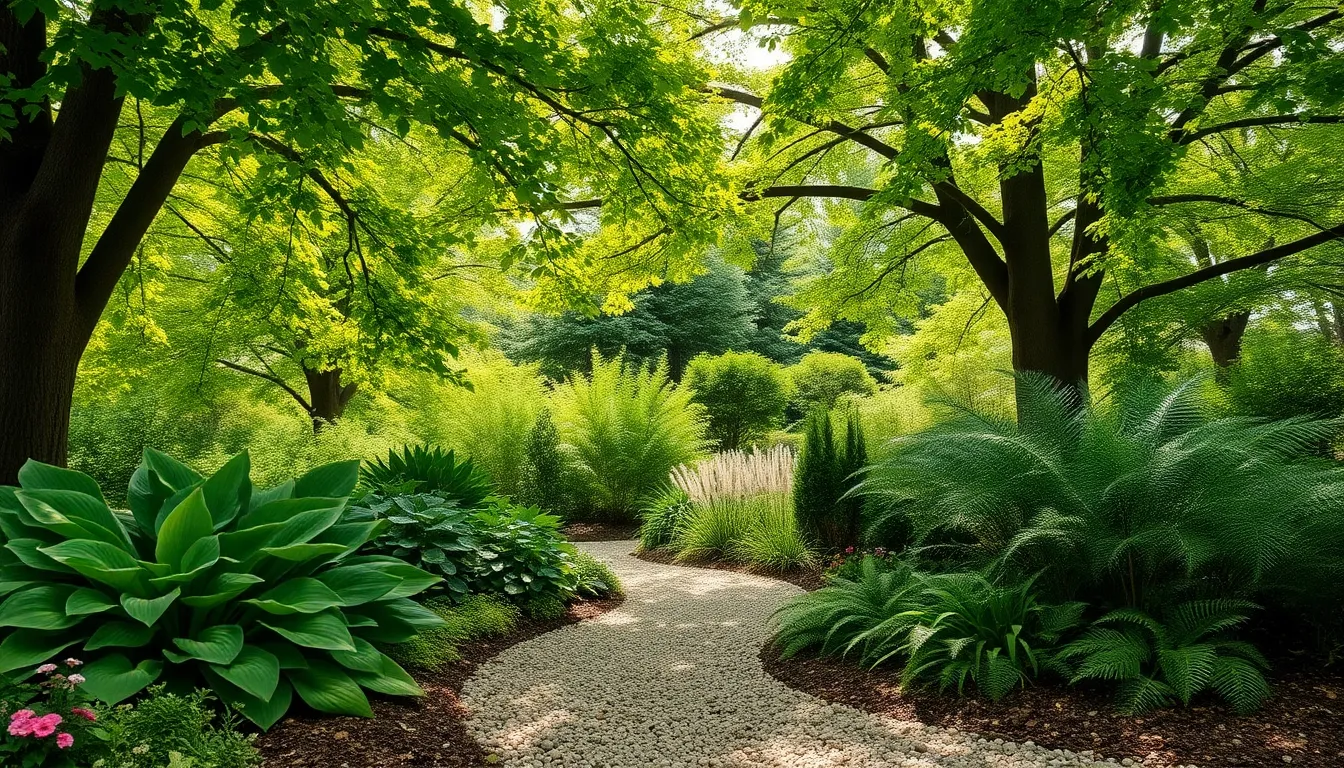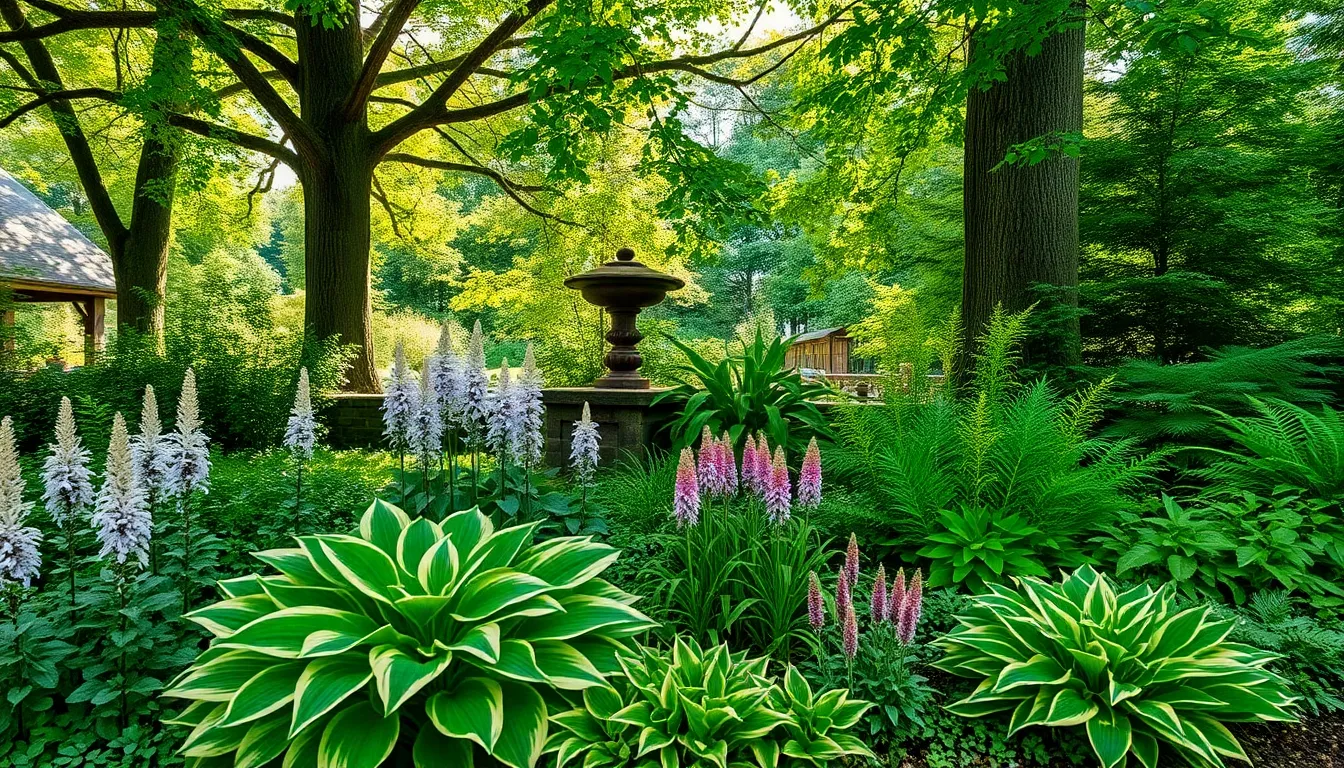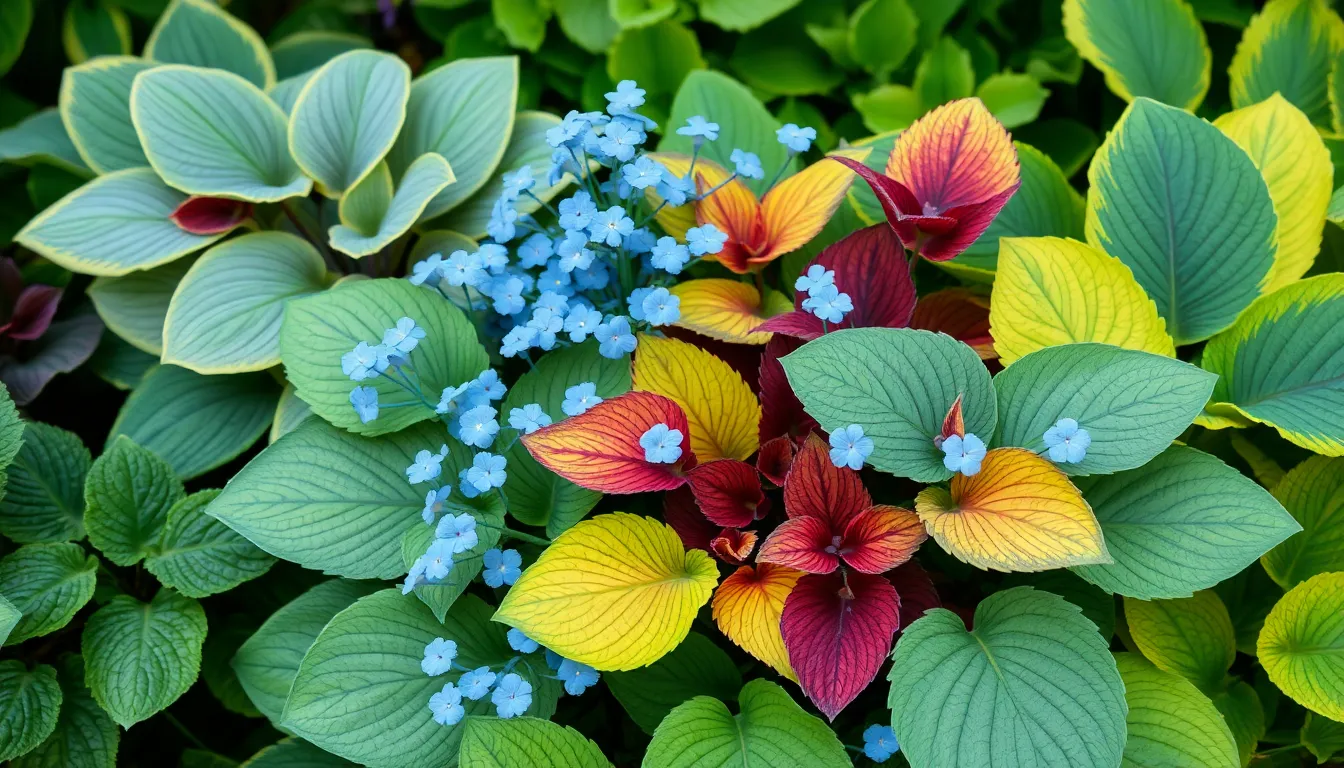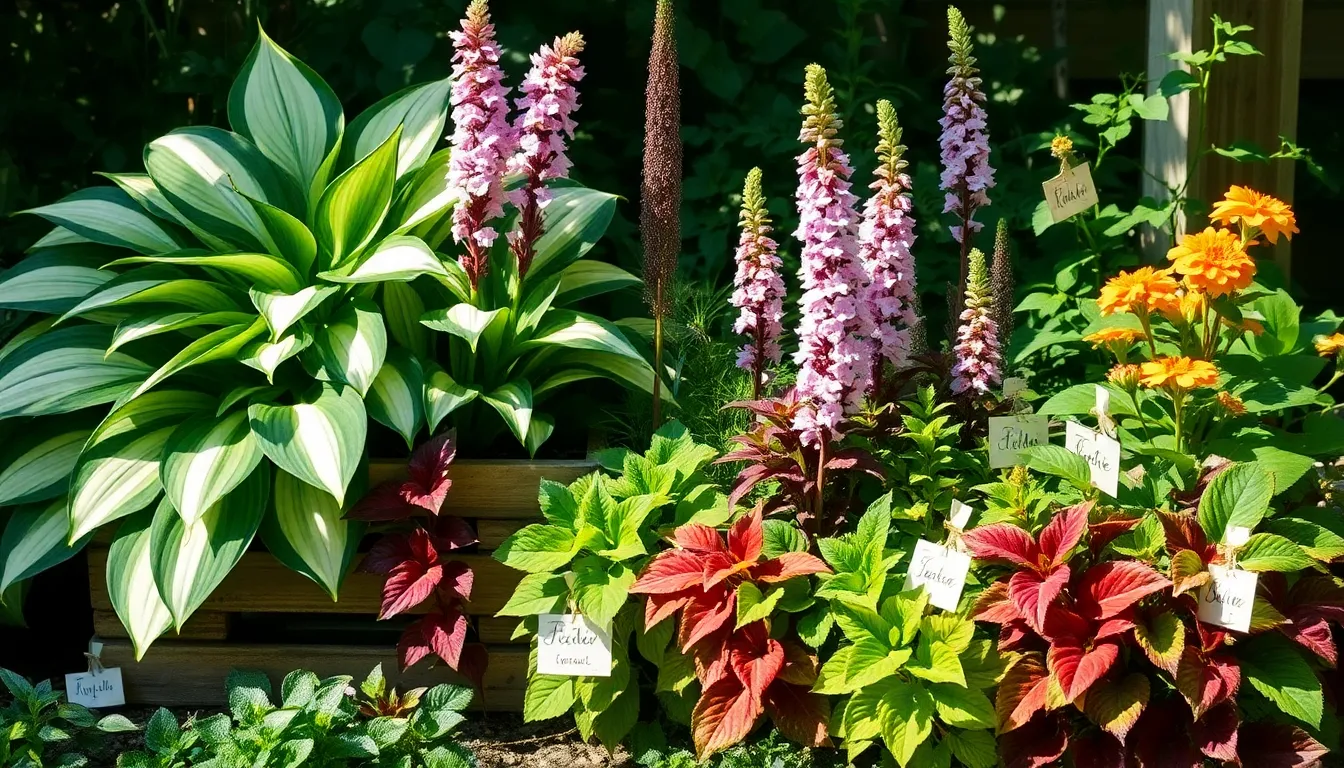Imagine stepping into a garden dappled with soft, gentle hues where lush foliage and delicate blooms thrive in the embrace of shade. Whether you’re a newcomer to the gardening world or a seasoned green thumb, creating a tranquil shade garden can be a truly rewarding endeavor. Shade gardens offer a unique opportunity to cultivate a serene, cool retreat that not only adds beauty to your landscape but also provides a sanctuary for both plants and people alike.
In this article, you’ll discover 15 remarkable DIY shade garden plants that will transform your shaded areas into vibrant, enchanting spaces. From the lush textures of hostas to the whimsical charm of ferns, we’ll guide you through a selection of plants that flourish without the need for direct sunlight. Whether you’re looking to breathe new life into a shady corner of your yard or seeking inspiration for your next gardening project, these plant choices will offer a palette of colors and textures to fit any style or preference.
As we delve into each plant, you’ll gain insights into the specific care and conditions each one requires, ensuring your shade garden not only survives but thrives. You’ll learn practical tips on planting, soil preparation, and maintenance that cater to both the needs of the plants and your gardening experience. So, gather your gardening tools, ignite your passion for planting, and let’s embark on a journey to create a shade garden that is as captivating as it is calming.
Understanding Shade Garden Basics
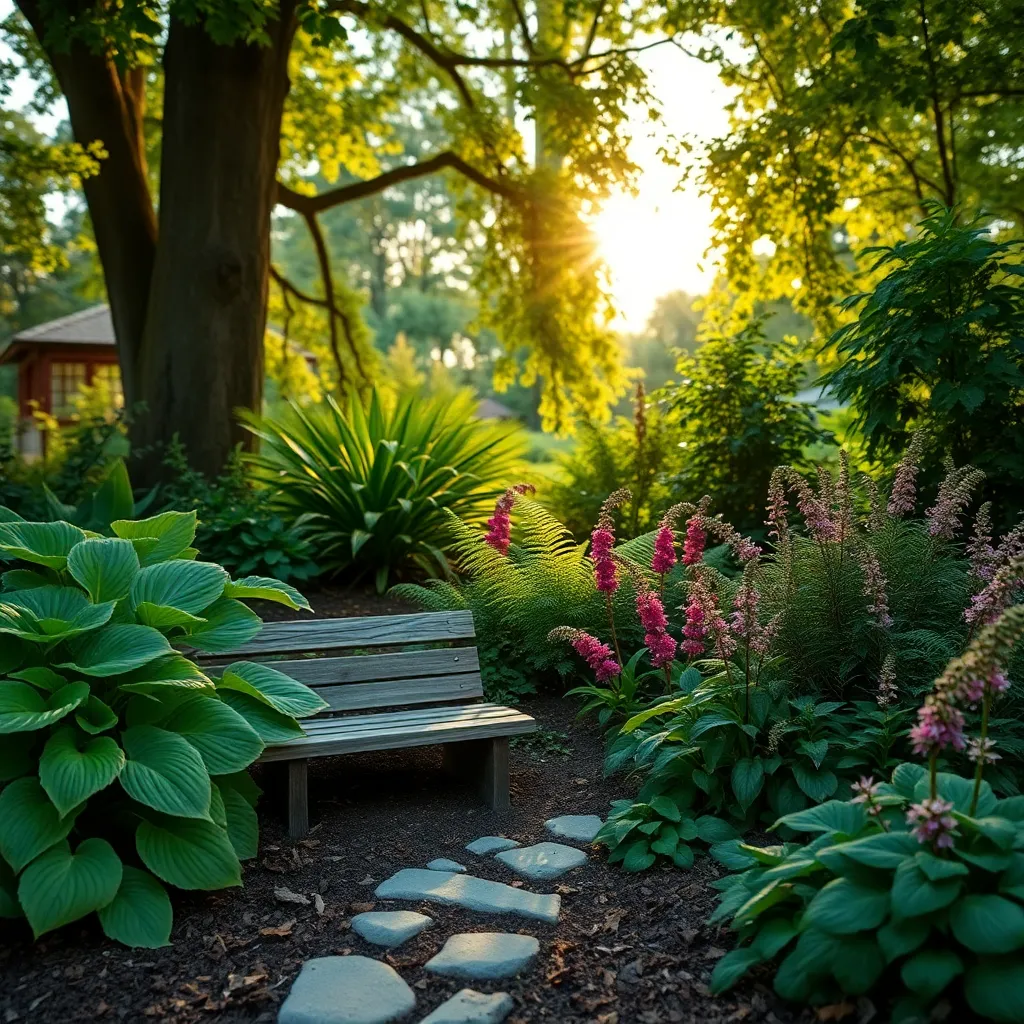
Creating a shade garden can be a delightful way to make use of areas in your yard that receive limited sunlight. Start by identifying the degree of shade—whether it’s full, partial, or dappled—since this will influence the types of plants you can successfully grow.
Understanding the soil is crucial for a thriving shade garden, as many shade-loving plants prefer nutrient-rich, well-draining soil. Consider adding organic matter like compost or leaf mold to improve soil structure and fertility.
Watering needs can vary significantly in a shade garden. While shaded areas generally retain moisture longer than sunny spots, be mindful not to overwater; check soil moisture with your finger before deciding if irrigation is necessary.
For beginners, hostas and ferns are excellent choices that thrive in shaded environments. Advanced gardeners might experiment with more exotic options like astilbe or hellebores, which can bring unique textures and colors to the garden.
Mulching is an effective technique to help maintain soil moisture and temperature, while also suppressing weeds that compete with your plants. Use a layer of organic mulch, such as shredded bark or pine needles, and apply it generously around your plants but not directly against their stems.
Top Benefits of Shade Plants
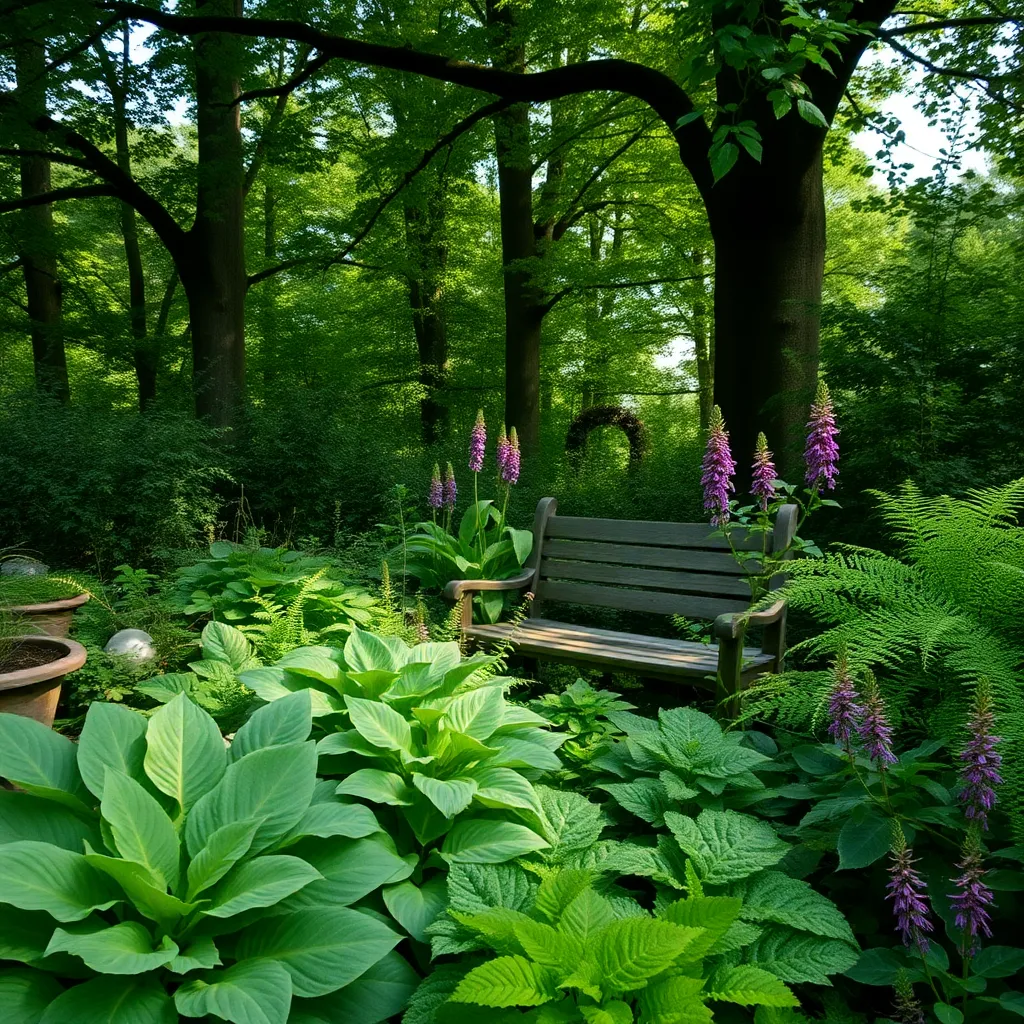
Shade plants offer a unique advantage by thriving in areas where other plants might struggle. They can transform a dim corner of your garden into a lush, vibrant space full of life and color.
One of the top benefits of shade plants is their ability to reduce soil erosion. With their extensive root systems, they hold the soil together, making them ideal for sloped or uneven garden areas.
Many shade plants are low maintenance, requiring less water than their sun-loving counterparts. This makes them perfect for gardeners who want beautiful greenery without the constant need for watering.
To get the most out of your shade plants, consider soil composition and moisture levels. Most shade-loving plants thrive in well-drained, rich soil, so incorporating organic matter like compost can enhance their growth.
For a thriving shade garden, it’s essential to monitor light levels and choose plants accordingly. While some plants prefer deep shade, others, like ferns and hostas, do well in dappled sunlight, providing versatility in plant selection.
Advanced gardeners might experiment with layering different types of shade plants to create depth and texture. Combining plants of varying heights and leaf sizes can result in a stunning display that maximizes the available space.
Choosing the Perfect Shade Spots
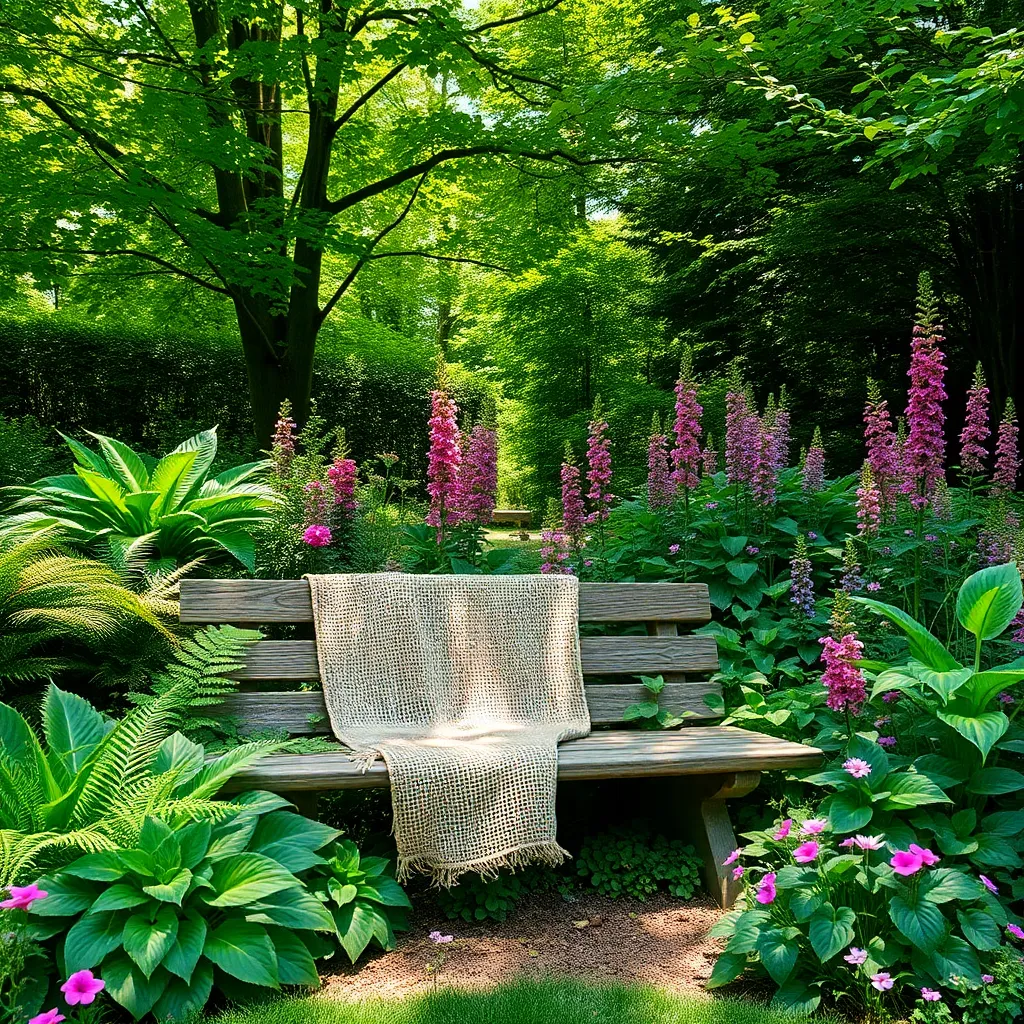
When choosing shade spots for your garden, consider locations that receive filtered sunlight or dappled shade throughout the day. These areas are often under the canopy of trees or next to structures like fences and walls that block direct sunlight for part of the day.
It’s crucial to assess the soil conditions in your chosen shade spot, as many shade plants prefer moist but well-draining soil. Incorporating organic matter like compost can improve soil structure and provide the nutrients that these plants thrive on.
For beginners, start with easy-to-grow shade plants like hostas and ferns, which are generally low-maintenance and can adapt to a variety of shade levels. Ensure these plants are watered regularly, especially during dry spells, as their shallow roots can dry out quickly in shaded areas.
Advanced gardeners might consider experimenting with plants like astilbe or bleeding hearts, which add texture and color to shady spots but require more attention to soil acidity and moisture levels. Regularly testing soil pH and amending with peat moss or sulfur can help maintain the slightly acidic conditions these plants prefer.
Essential Tools for Shade Gardening
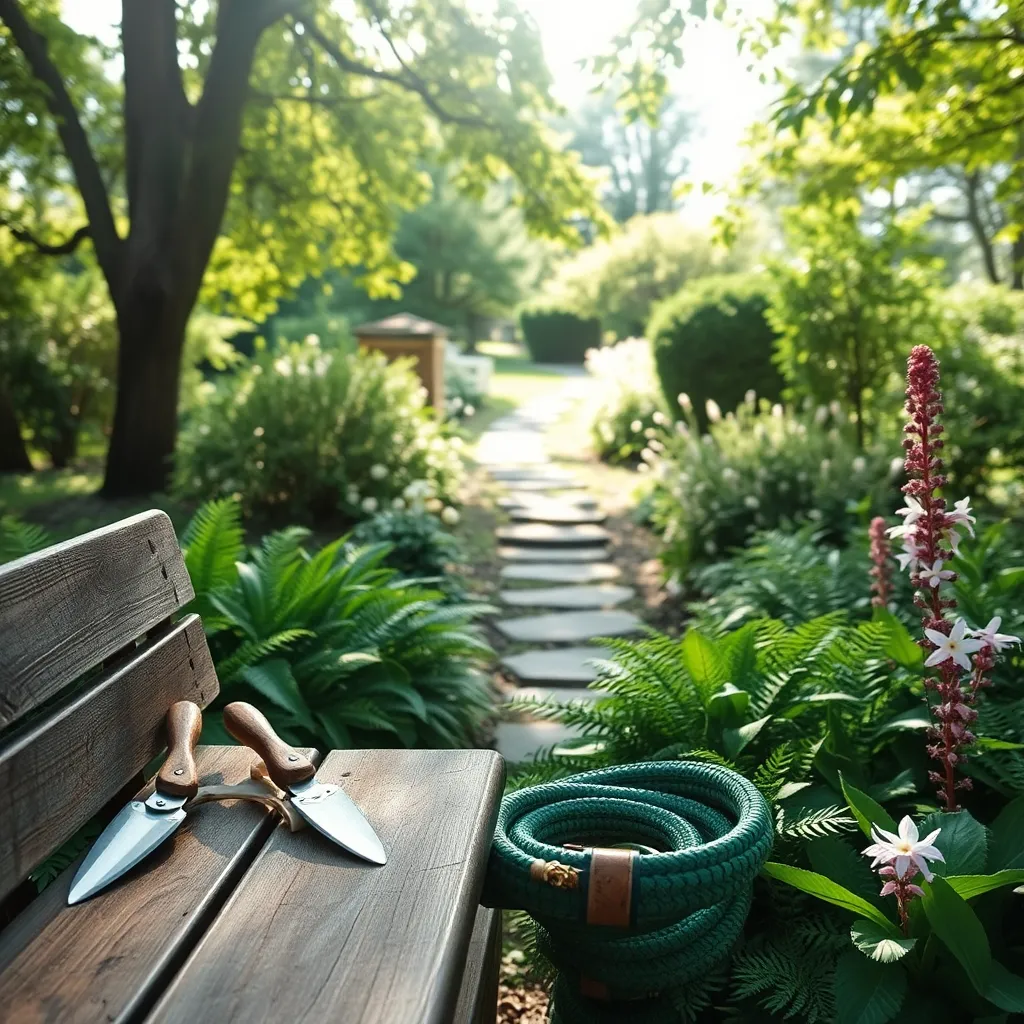
When embarking on shade gardening, having the right tools is essential for success. A good pair of pruning shears is indispensable for maintaining the size and shape of your shade-loving plants.
For soil preparation, a high-quality trowel will make planting easier, especially in densely shaded areas where the soil can be compact. Look for a trowel with a comfortable grip and a durable blade to withstand tough soil conditions.
In shade gardens, keeping the soil moist is crucial, so a watering can with a fine rose is a must-have tool. This helps distribute water evenly and gently, ensuring the soil stays adequately moist without washing away seeds or damaging tender plant roots.
To keep your garden tidy, invest in a garden rake to remove fallen leaves and debris that can accumulate in shaded areas. Opt for a lightweight rake that allows you to maneuver easily in tight spaces without disturbing the plant roots.
For those looking to expand their shade garden, a hand fork is perfect for loosening soil around established plants and incorporating organic matter. This tool also helps aerate the soil, which is vital in shaded areas where airflow can be limited.
Preparing Soil for Shade Plants
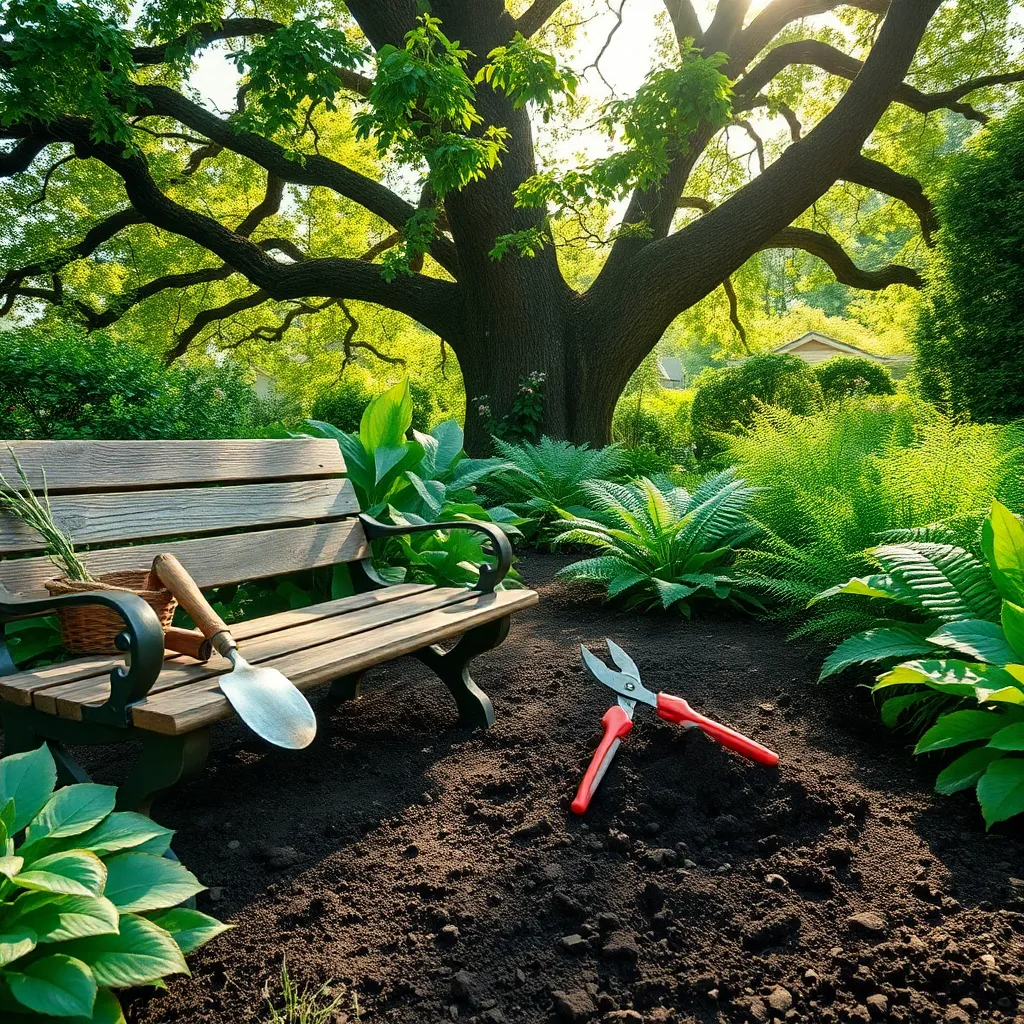
Preparing your soil properly is essential for the success of your shade garden plants. Begin by testing your soil to check its pH level and nutrient content, as this will guide your amendments.
Ensure your soil is well-draining, as most shade plants prefer not to sit in waterlogged conditions. Add organic matter such as compost or well-rotted manure to improve soil structure and fertility.
For best results, incorporate a layer of mulch to help retain moisture and suppress weeds. Choose organic mulch like shredded bark or leaf mold, which will also break down over time and enrich the soil.
In shaded areas, soil can be compacted, so gently loosen it with a garden fork before planting. This will allow plant roots to establish more easily and promote healthy growth.
Watering Tips for Shaded Areas
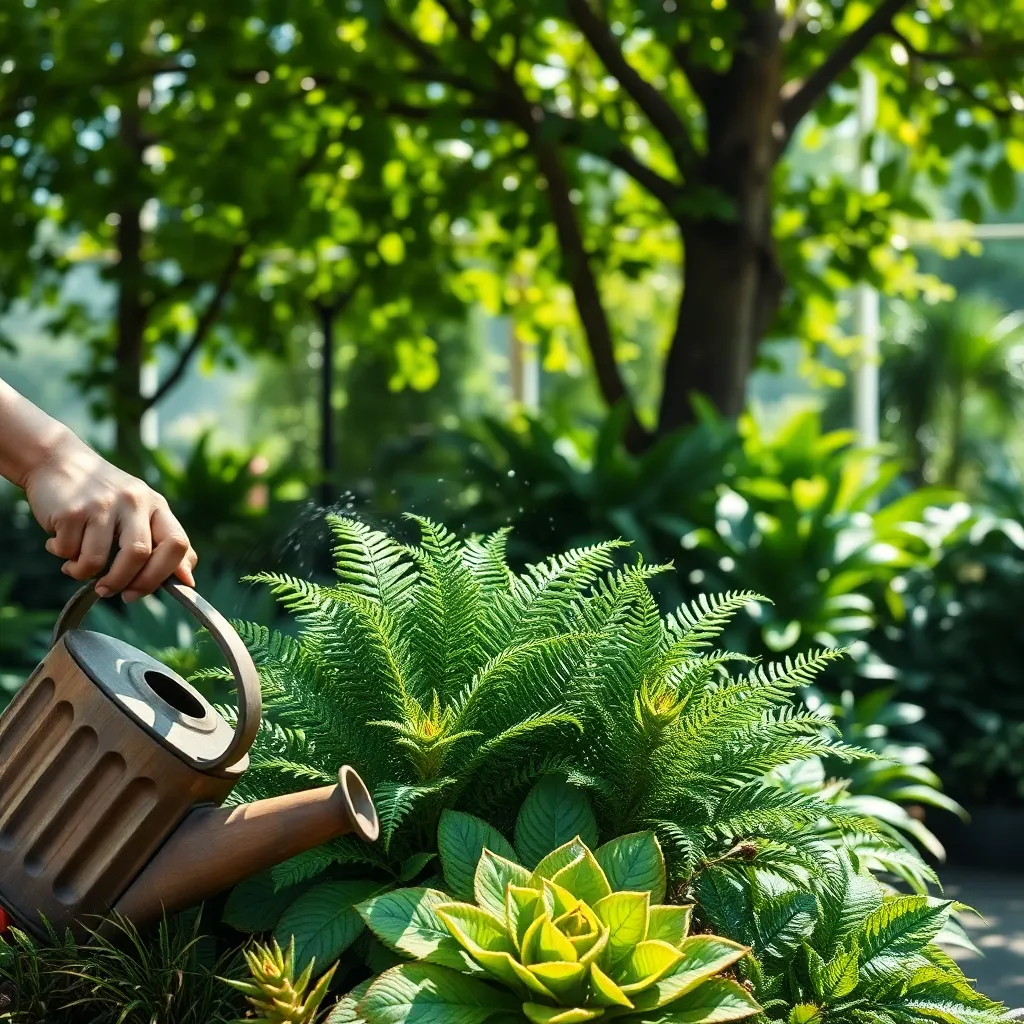
Watering plants in shaded areas requires a different approach compared to sunnier spots. Shaded areas typically retain moisture longer, so it’s crucial to avoid overwatering, which can lead to root rot.
Check the soil moisture before adding water by sticking your finger about an inch into the soil. If it feels dry at that depth, it’s time to water; otherwise, wait a day or two before checking again.
Mulching can be particularly beneficial in shaded gardens as it helps retain moisture and suppress weeds. Use a layer of organic mulch, such as shredded leaves or bark, to keep the soil consistently moist without becoming waterlogged.
For those with more advanced gardening skills, consider installing a drip irrigation system. This can provide precise watering right at the root zone, ensuring each plant gets the right amount of moisture without oversaturating the area.
Planting Techniques for Dense Shade
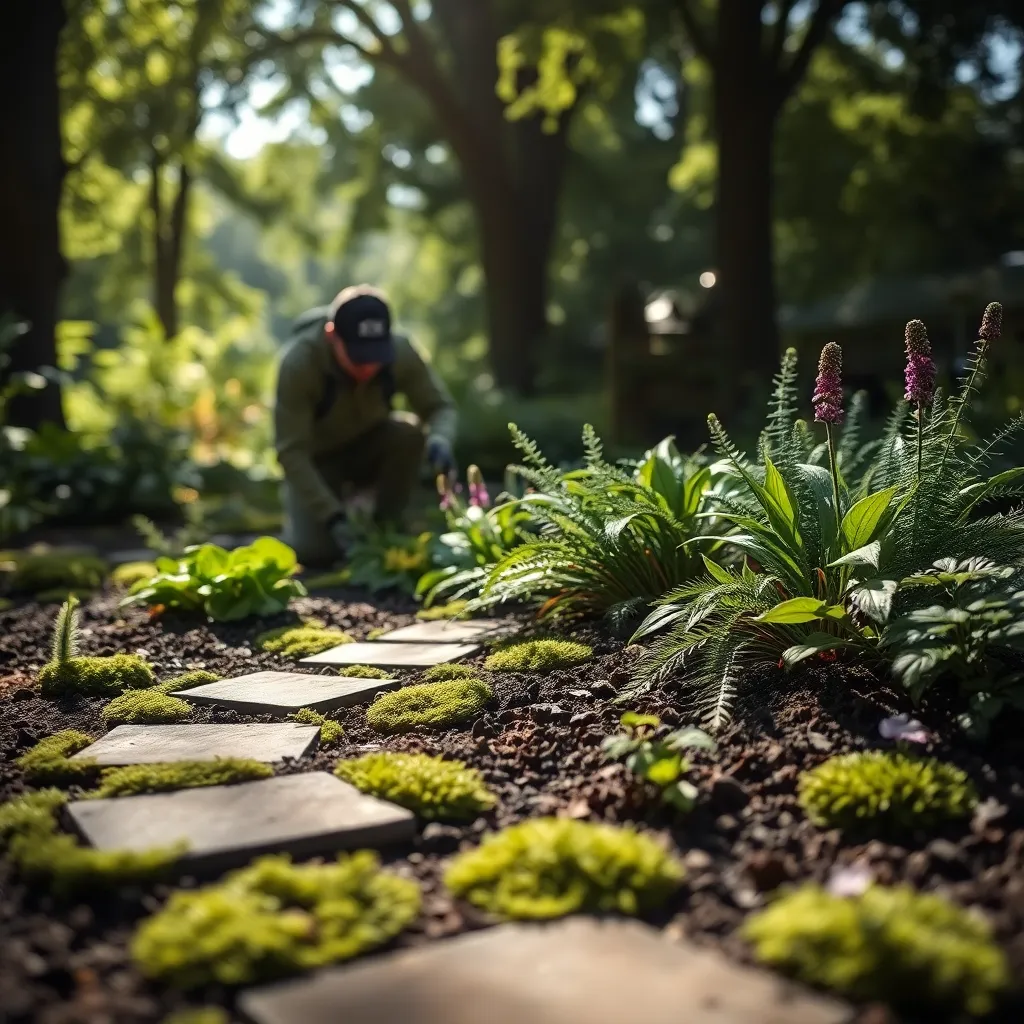
When gardening in dense shade, selecting the right plants is crucial for success. Choose shade-loving varieties like hostas, ferns, and astilbes, which are well-suited to thrive in low-light conditions.
It’s important to prepare the soil properly to ensure healthy plant growth. Use a mix of rich, organic matter such as compost or well-rotted leaf mold to improve soil fertility and drainage.
Dense shade gardens often require less watering than sunnier spots, but it’s essential to monitor soil moisture levels regularly. Aim to water deeply once a week, ensuring the soil remains consistently moist but not waterlogged.
For advanced gardeners looking to optimize plant health in dense shade, consider using reflective surfaces to increase ambient light. Strategically placing mirrors or light-colored stones can help bounce light around the garden, enhancing plant growth.
Ferns: Lush Green Foliage
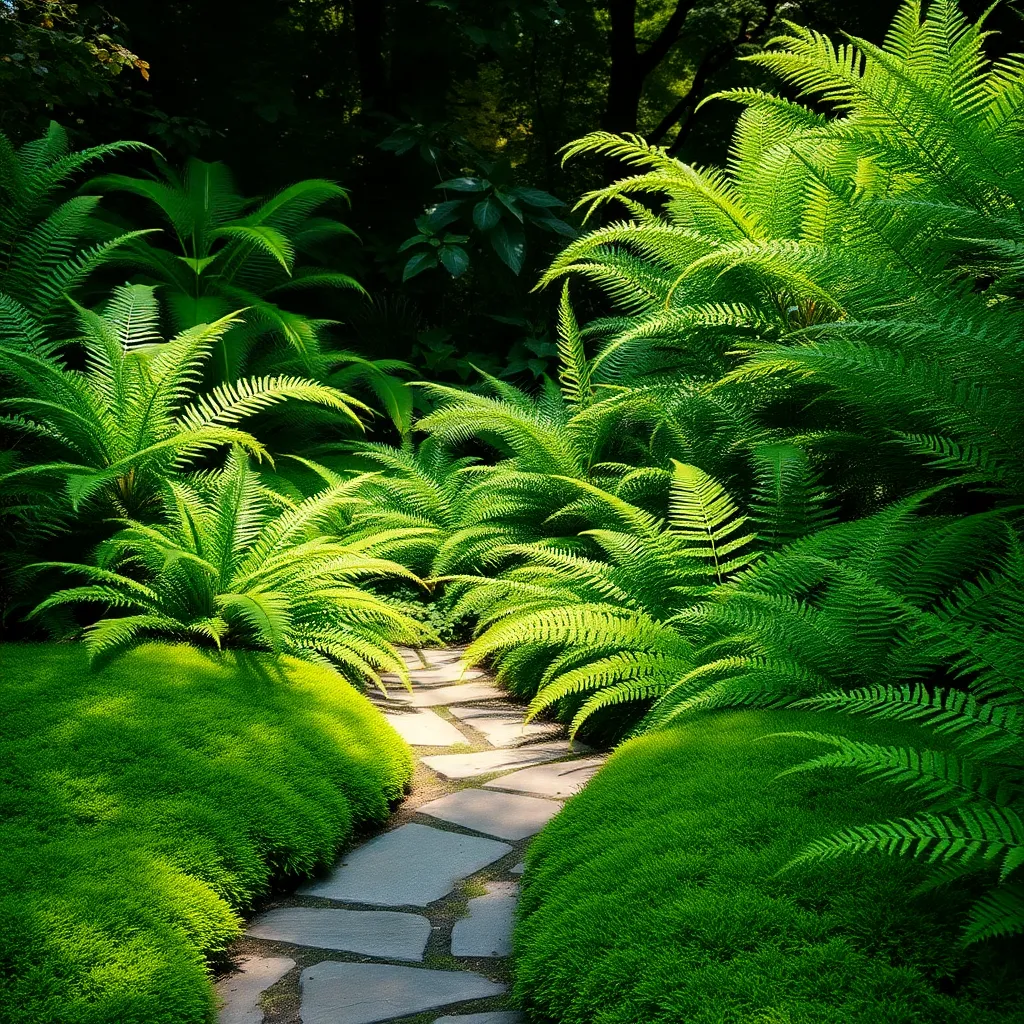
Ferns are excellent for adding lush, green foliage to any shade garden. They thrive in areas with minimal direct sunlight, making them perfect for densely shaded spots.
When planting ferns, it’s essential to choose a well-draining soil enriched with organic matter. You can prepare the soil by mixing in compost or peat moss to retain moisture while ensuring proper drainage.
Water your ferns consistently, aiming to keep the soil evenly moist but not waterlogged. A good rule of thumb is to water when the top inch of the soil feels dry, especially during periods of drought.
For those looking to elevate their fern game, consider the unique beauty of Japanese painted ferns or the hardy ostrich ferns. These varieties not only add texture but also come with unique hues that can enhance the visual interest of your shade garden.
Hostas: Versatile Shade Favorites
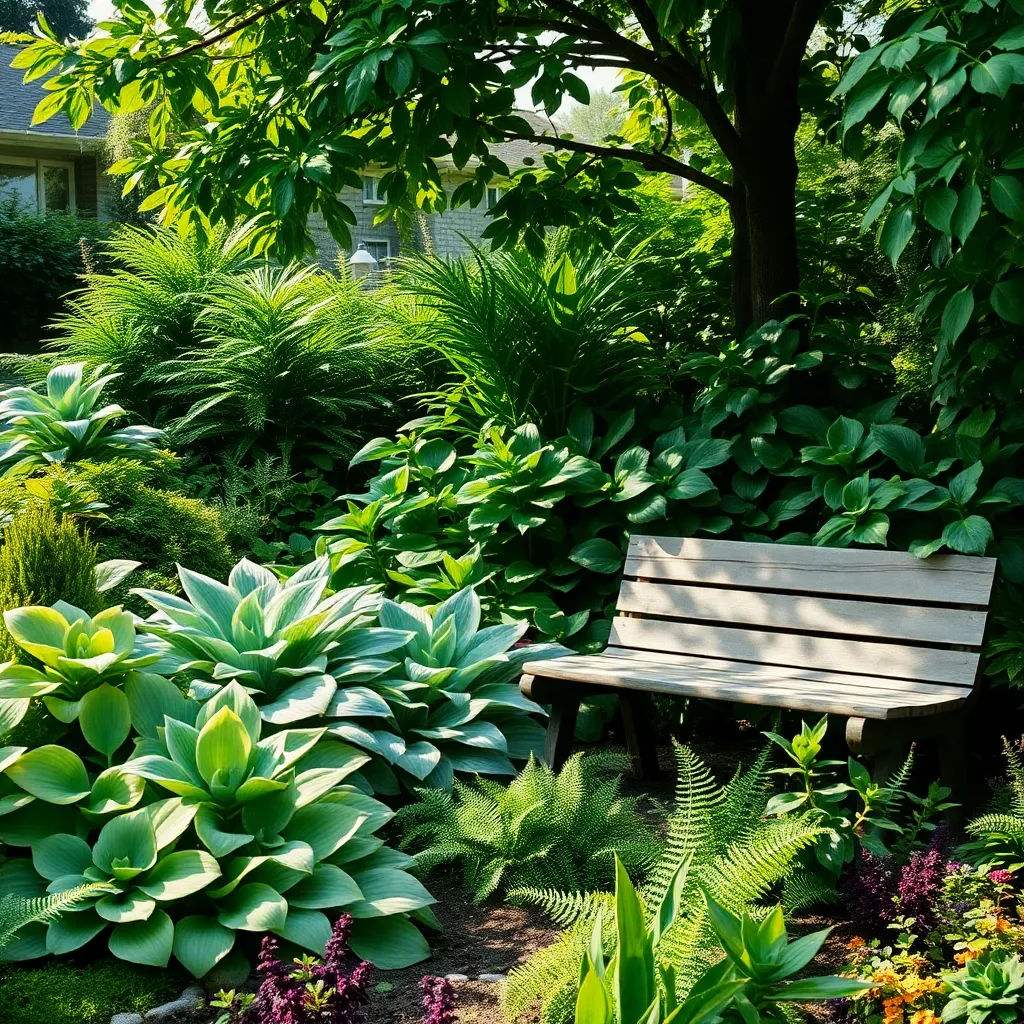
Hostas are a fantastic choice for adding texture and color to your shade garden. Known for their lush foliage, they thrive in areas with dappled sunlight and can transform a dim corner into a vibrant display.
To succeed with hostas, start with well-draining soil enriched with organic matter like compost. Consistent moisture is crucial, so ensure they receive about one inch of water per week, especially during dry spells.
Beginner gardeners will appreciate that hostas are relatively low-maintenance once established. However, advanced gardeners can experiment with different varieties, as hostas come in a striking range of leaf shapes, sizes, and colors.
Keep in mind that hostas can be vulnerable to slugs and snails, so consider using natural deterrents like crushed eggshells or copper tape around the plants. Dividing hostas every few years not only helps control their size but also allows you to propagate new plants for other areas of your garden.
Astilbes: Adding Color to Shade
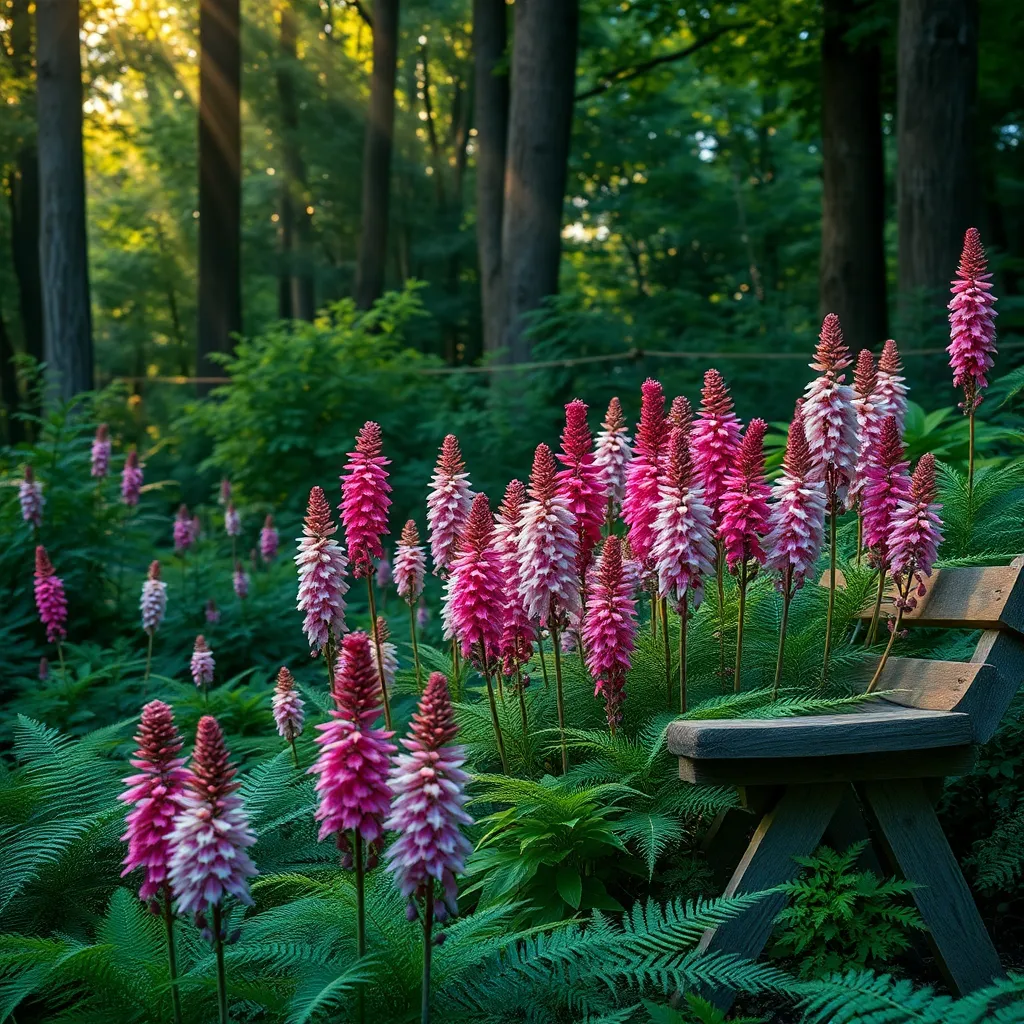
Astilbes are an excellent choice for adding vibrant color to shady garden spots. These perennials thrive in areas with partial to full shade, making them ideal companions for hostas and other shade-loving plants.
When planting astilbes, ensure they have access to consistently moist soil, as they do not tolerate drought well. It’s beneficial to enrich the soil with organic matter like compost to improve moisture retention and provide the nutrients they need.
For those just starting out, consider planting astilbes in well-draining soil with a pH between 6.0 and 7.0. More experienced gardeners might experiment with different varieties, such as ‘Fanal’ or ‘Visions,’ to create a tapestry of colors ranging from deep red to soft pink.
Water astilbes regularly, especially during dry spells, to prevent wilting and ensure robust growth. A layer of mulch around the base can help maintain soil moisture and suppress weeds, offering an easy maintenance tip for busy gardeners.
Heucheras: Vibrant Leaf Varieties
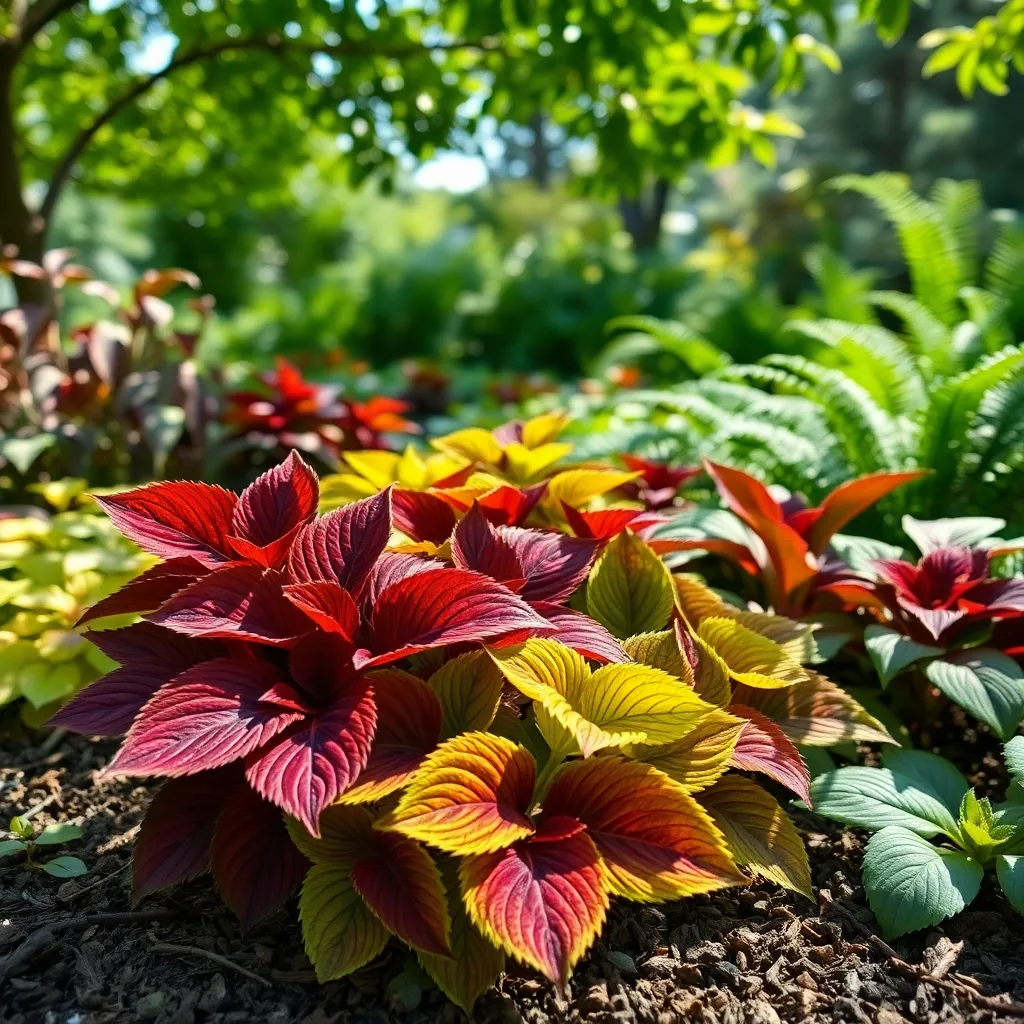
Heucheras, commonly known as coral bells, are a delightful addition to any shade garden with their vibrant foliage. These perennials thrive in partial to full shade, making them perfect companions to other shade-loving plants like astilbes.
To ensure your heucheras flourish, plant them in well-draining soil enriched with organic matter. Water them regularly but avoid waterlogging, as this can lead to root rot—a common issue for these plants.
For beginners, it’s important to note that heucheras can be susceptible to frost heaving in colder climates. To prevent this, apply a thick mulch layer around the base of the plant in late fall, which helps insulate the roots during winter.
Experienced gardeners might experiment with different heuchera varieties, as they come in a spectrum of leaf colors from deep burgundy to lime green. Divide mature plants every three to four years to maintain their vigor and expand your garden with ease.
Coral Bells: Low-Maintenance Beauty
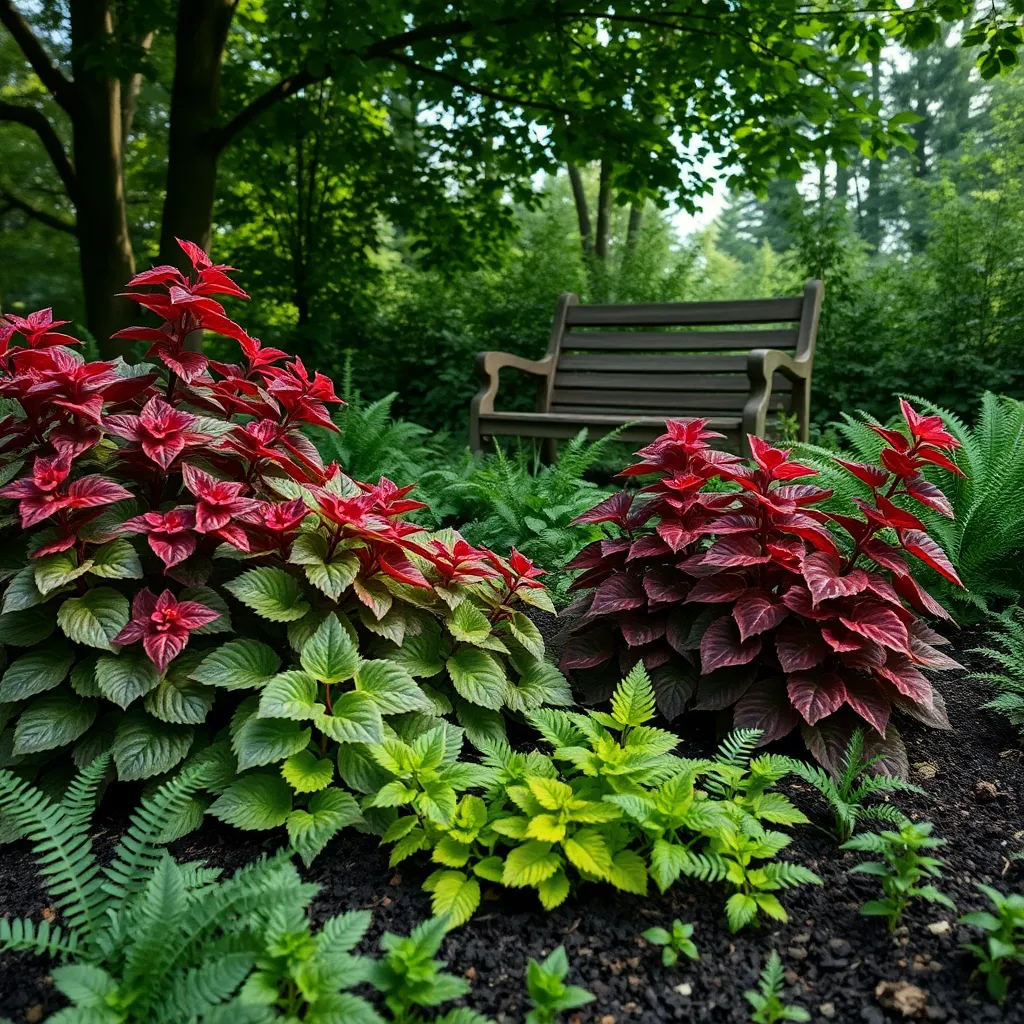
Coral Bells, also known as Heuchera, are an excellent choice for gardeners seeking low-maintenance beauty. These perennials are known for their stunning foliage, which comes in a variety of colors from vibrant purples to lush greens.
For optimal growth, plant Coral Bells in well-draining soil rich in organic matter. They thrive in partial shade, making them perfect for areas with dappled sunlight or morning sun.
Watering is straightforward: keep the soil consistently moist but not waterlogged. During the summer, a weekly deep watering should suffice, while reducing frequency in cooler months.
To keep these plants looking their best, mulch around the base to help retain moisture and suppress weeds. Fertilize in early spring with a balanced, slow-release fertilizer to encourage vibrant leaf color and robust growth.
For the more adventurous gardener, consider dividing the plants every 3 to 4 years to prevent overcrowding and maintain vigor. This process not only rejuvenates the plant but also offers an opportunity to expand your garden or share with friends.
Bleeding Hearts: Delicate Blooms
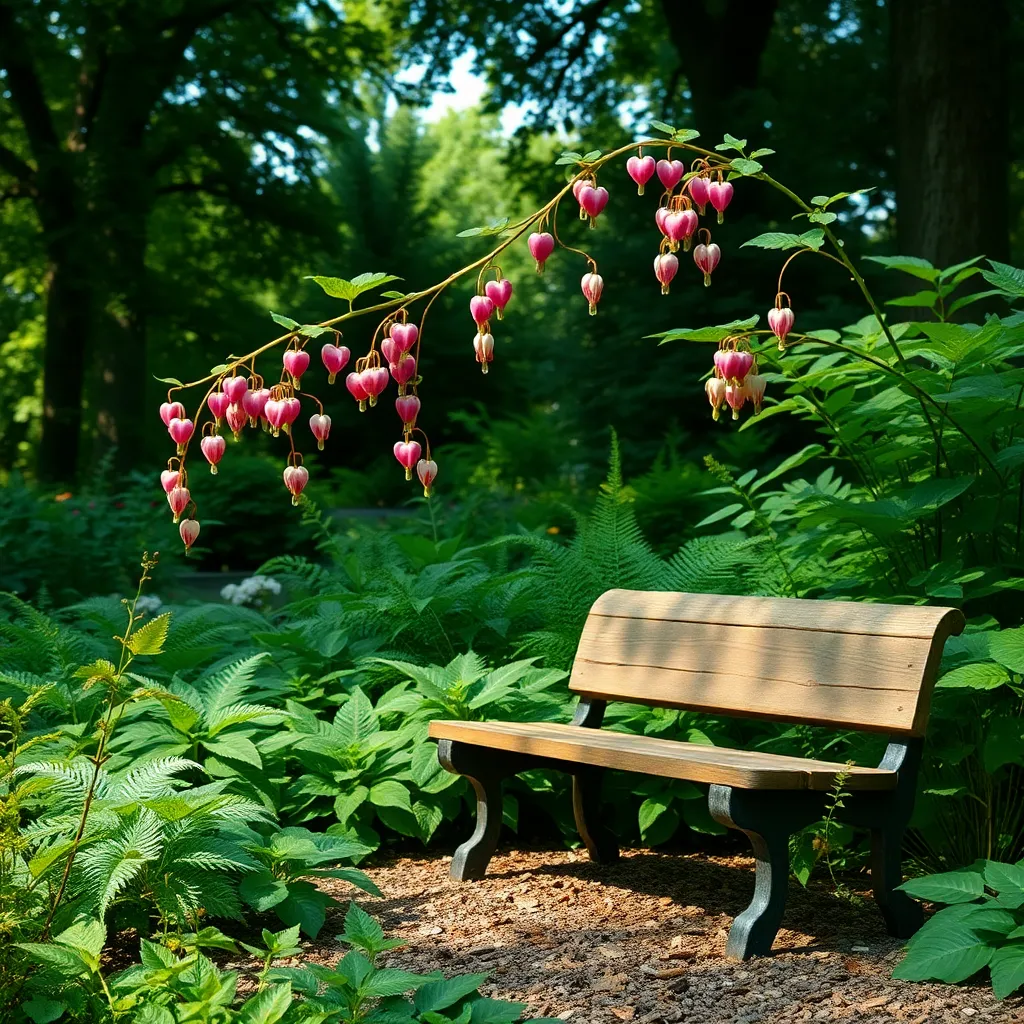
Bleeding Hearts are beloved for their enchanting, heart-shaped blooms that dangle gracefully from arching stems. These perennials thrive in shaded areas, making them perfect for enhancing a woodland garden or a shady corner of your yard.
To ensure healthy growth, plant your Bleeding Hearts in well-draining, humus-rich soil that retains moisture without becoming waterlogged. Regular watering is crucial, especially during dry spells, but take care not to oversaturate the roots.
Position these plants where they receive dappled sunlight, as too much direct sun can scorch their delicate foliage. As an advanced tip, consider interplanting with ferns or hostas, which will fill in the space once the Bleeding Hearts enter their dormant phase in midsummer.
For optimal growth, apply a layer of organic mulch around the base to retain moisture and suppress weeds. Fertilize lightly in early spring with a balanced, slow-release fertilizer to encourage robust blooms without excessive leaf growth.
Maintenance Tips for Shade Gardens
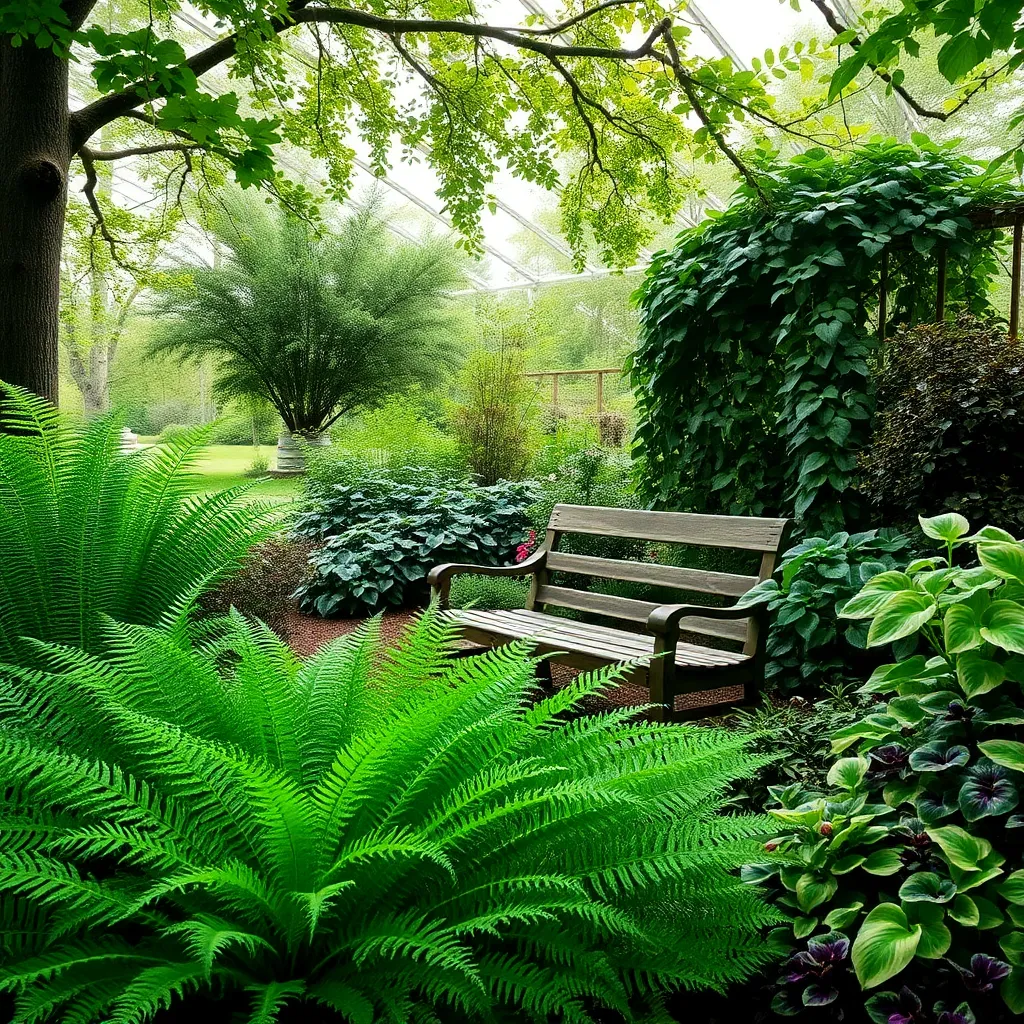
Maintaining a shade garden requires some specific considerations to ensure your plants thrive. Begin by regularly checking the soil moisture, as shaded areas tend to retain water longer; use your finger to gauge dampness and water only when the top inch of soil feels dry.
It’s important to consider the quality of soil in your shade garden. Amend the soil with organic matter such as compost to improve drainage and provide essential nutrients, especially in areas where tree roots may compete for resources.
Pest management is crucial in shaded environments, which can become breeding grounds for slugs and snails. Employ natural deterrents like crushed eggshells or diatomaceous earth around your plants to protect them from these common pests.
For those with more experience, focus on enhancing the dappled light effect to benefit your plants. Prune back overhanging branches periodically to allow more light penetration, which can encourage healthier growth and flowering.
Common Mistakes to Avoid
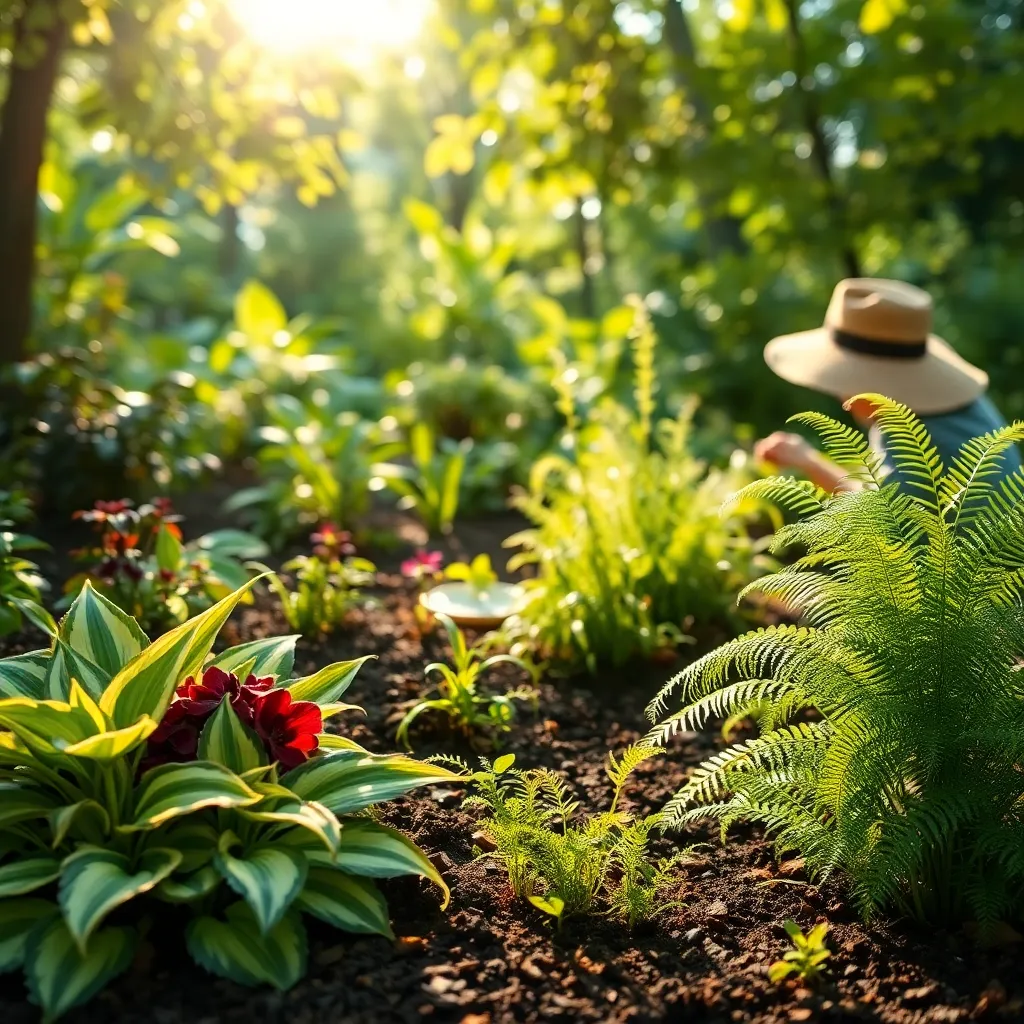
One common mistake in shade gardening is assuming all shade is the same. It’s crucial to understand the type of shade your garden receives—whether it’s partial, dappled, or full shade—as this will guide your plant choices and care routines.
Overwatering is a frequent error with shade plants, as they typically require less water than those in full sun. To avoid root rot, test the soil moisture by inserting your finger about an inch deep; only water if the soil feels dry at that depth.
Ignoring soil quality can lead to poor plant growth. Enrich your shade garden soil with organic matter like compost or well-rotted leaf mold to improve drainage and nutrient availability, ensuring your plants thrive.
Another pitfall is crowding plants too closely together. Allow proper spacing between plants not only to accommodate their mature size but also to ensure adequate air circulation, which helps prevent fungal diseases.
Some gardeners neglect to account for the varying needs of different shade plants. Research the specific requirements of each species in your garden, such as preferred soil pH and nutrient needs, to tailor your care accordingly.
Skipping regular maintenance is a mistake that can lead to an untidy, unhealthy garden. Regularly remove debris, prune dead or diseased foliage, and keep an eye out for pests to maintain a vibrant, healthy shade garden.
Conclusion: Growing Success with These Plants
In exploring the verdant world of ’15 DIY Shade Garden Plants,’ we unearthed essential relationship concepts that parallel the nurturing of a thriving garden. From the importance of patience and adaptability, akin to tending slow-growing ferns, to the resilience and perseverance symbolized by hardy hostas, each plant metaphorically illustrated key relational dynamics. We delved into the value of space and individuality, mirrored by the expansive leaves of the elephant ear, and the beauty of diversity and coexistence, as showcased in mixed plant beds.
To cultivate your relationships further, take a moment today to identify one area where you can plant the seeds of these insights—be it through active listening, shared activities, or simply appreciating the quiet moments together. As you embark on this journey, remember to save this article as your companion guide, ensuring these lessons remain at your fingertips whenever you need a gentle reminder.
Looking ahead, envision a future where your relationships bloom with understanding, care, and shared joy. By investing time and effort now, you lay the foundation for lasting connections that enrich your life. Bookmark this page to revisit and reinforce these strategies, nurturing relationships that flourish like a lovingly tended shade garden.

